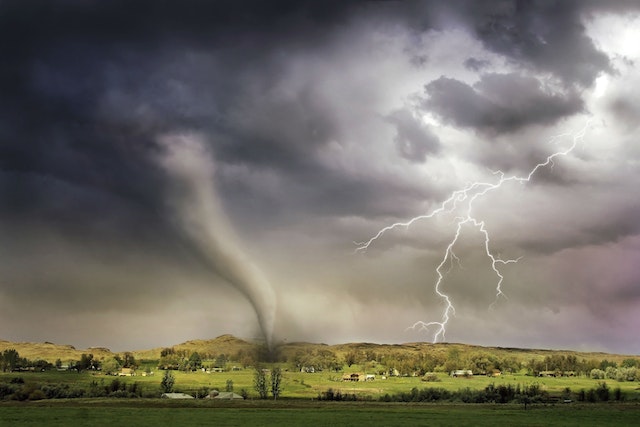Introduction:
Tornadoes are powerful and destructive weather phenomena that can cause widespread devastation. As concerns about climate change continue to grow, scientists are studying its potential impact on tornado intensity. In this article, we will delve into the scientific research to understand the relationship between climate change and tornado intensity.
1. Tornado Intensity: Unleashing the Power:
Tornado intensity refers to the destructive power of a tornado, which is often measured using the Enhanced Fujita (EF) scale. The EF scale categorizes tornadoes based on the damage they cause, ranging from EF0 (weakest) to EF5 (strongest). Understanding the factors that influence tornado intensity is crucial in assessing the potential impact of climate change.
2. Climate Change and Tornado Ingredients:
Tornadoes form under specific atmospheric conditions. Climate change can influence these conditions by altering temperature, humidity, wind patterns, and atmospheric instability. These changes can potentially impact tornado intensity, although the relationship is complex and multifaceted.
3. Warmer Temperatures and Moisture:
Global warming, a key aspect of climate change, can contribute to warmer temperatures. Increased heat can lead to higher levels of atmospheric moisture, which can fuel thunderstorm development. The availability of more moisture in the atmosphere may result in the formation of stronger thunderstorms, potentially leading to more intense tornadoes.
4. Changes in Atmospheric Instability:
Climate change can also affect atmospheric instability, an essential ingredient for severe thunderstorm and tornado formation. Instability refers to the condition where warm, moist air is positioned beneath colder, drier air. Changes in temperature profiles due to global warming can influence atmospheric instability, potentially contributing to more intense thunderstorms and tornadoes.
5. Wind Shear and Climate Change:
Wind shear, the variation in wind speed and direction with height, plays a crucial role in tornado formation and intensity. Climate change can impact wind shear patterns, but the specific influence on tornado intensity is still not fully understood. Further research is needed to unravel the complex relationship between climate change and wind shear.
6. Research Findings and Uncertainties:
Scientific research on the link between climate change and tornado intensity is ongoing. While some studies suggest a potential increase in tornado intensity due to climate change, there is still uncertainty and ongoing debate within the scientific community. The complex nature of tornado formation, regional variations, and the limitations of historical data contribute to the challenges in drawing definitive conclusions.
7. The Need for Continued Research:
To gain a comprehensive understanding of the relationship between climate change and tornado intensity, continued research efforts are essential. Scientists are utilizing advanced climate models, analyzing historical tornado data, and conducting studies to improve our knowledge. These research endeavors aim to enhance our ability to predict and mitigate the impacts of tornadoes in a changing climate.
Conclusion:
The relationship between climate change and tornado intensity is an area of active scientific investigation. While global warming can potentially influence tornado intensity through changes in temperature, moisture, and atmospheric instability, the exact nature and magnitude of this influence remain uncertain. Ongoing research aims to better understand the complex dynamics of tornado formation and intensity, taking into account regional variations and other contributing factors. This continued scientific inquiry will contribute to our ability to prepare for and mitigate the impacts of intense tornadoes in a changing climate.




